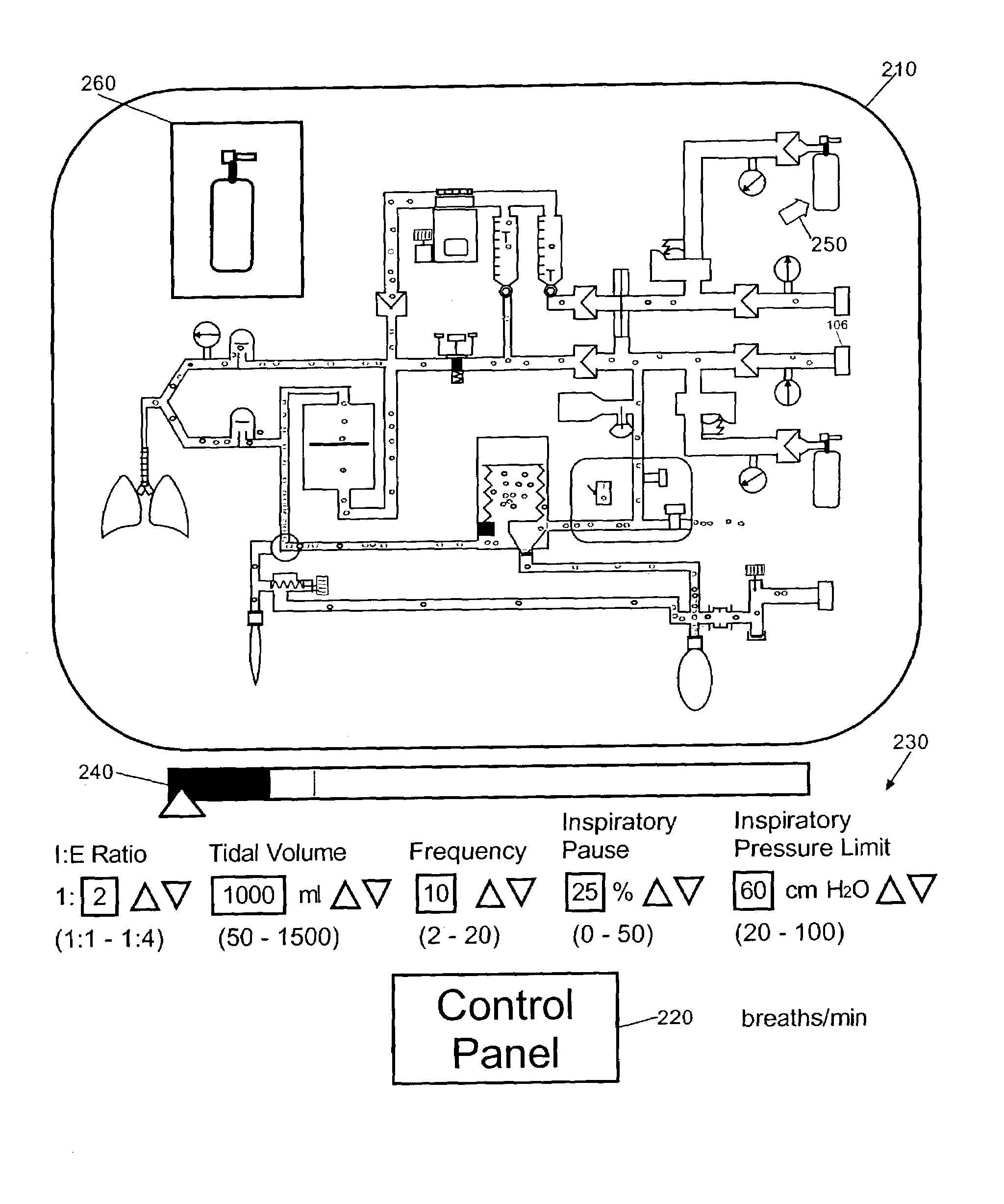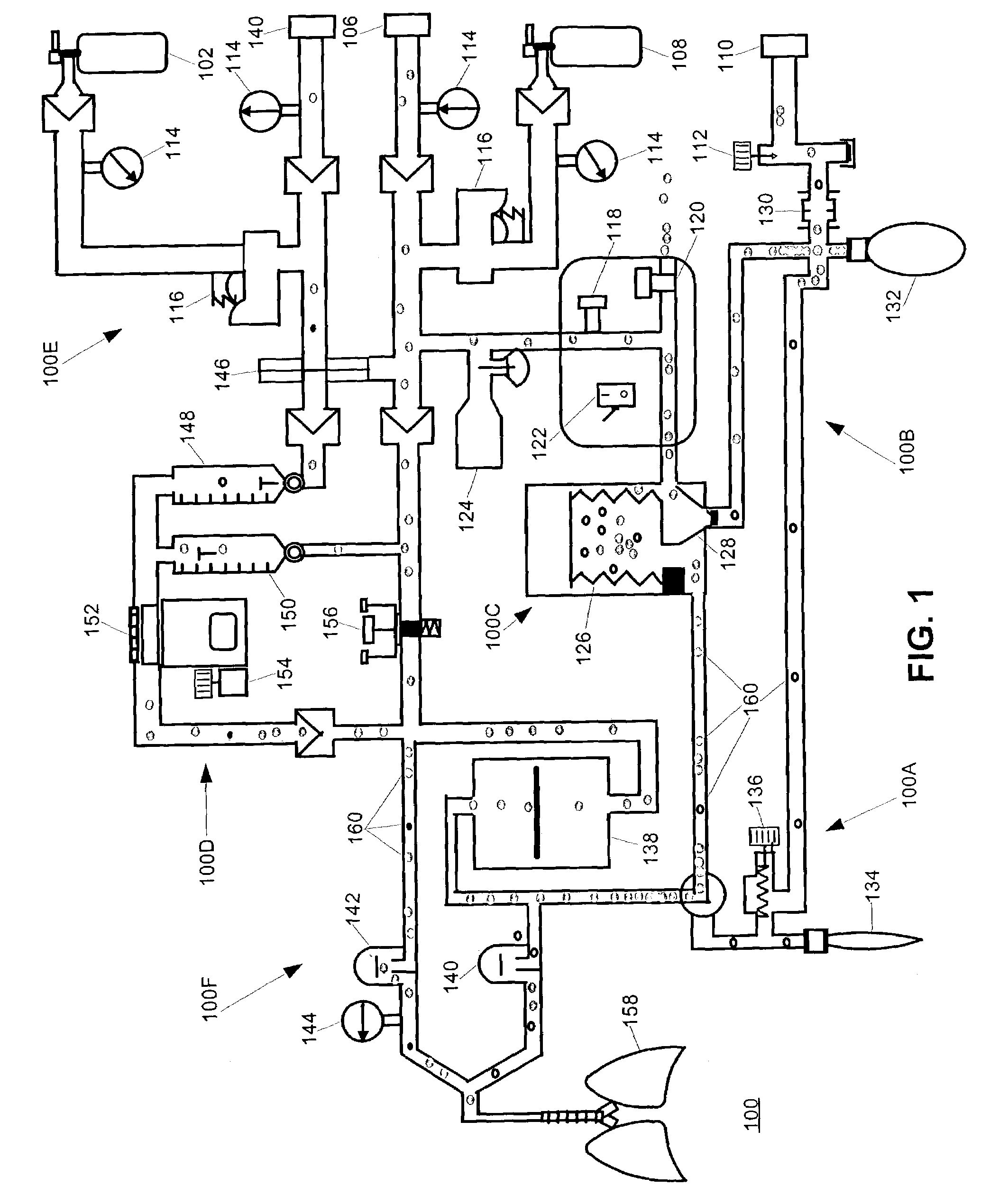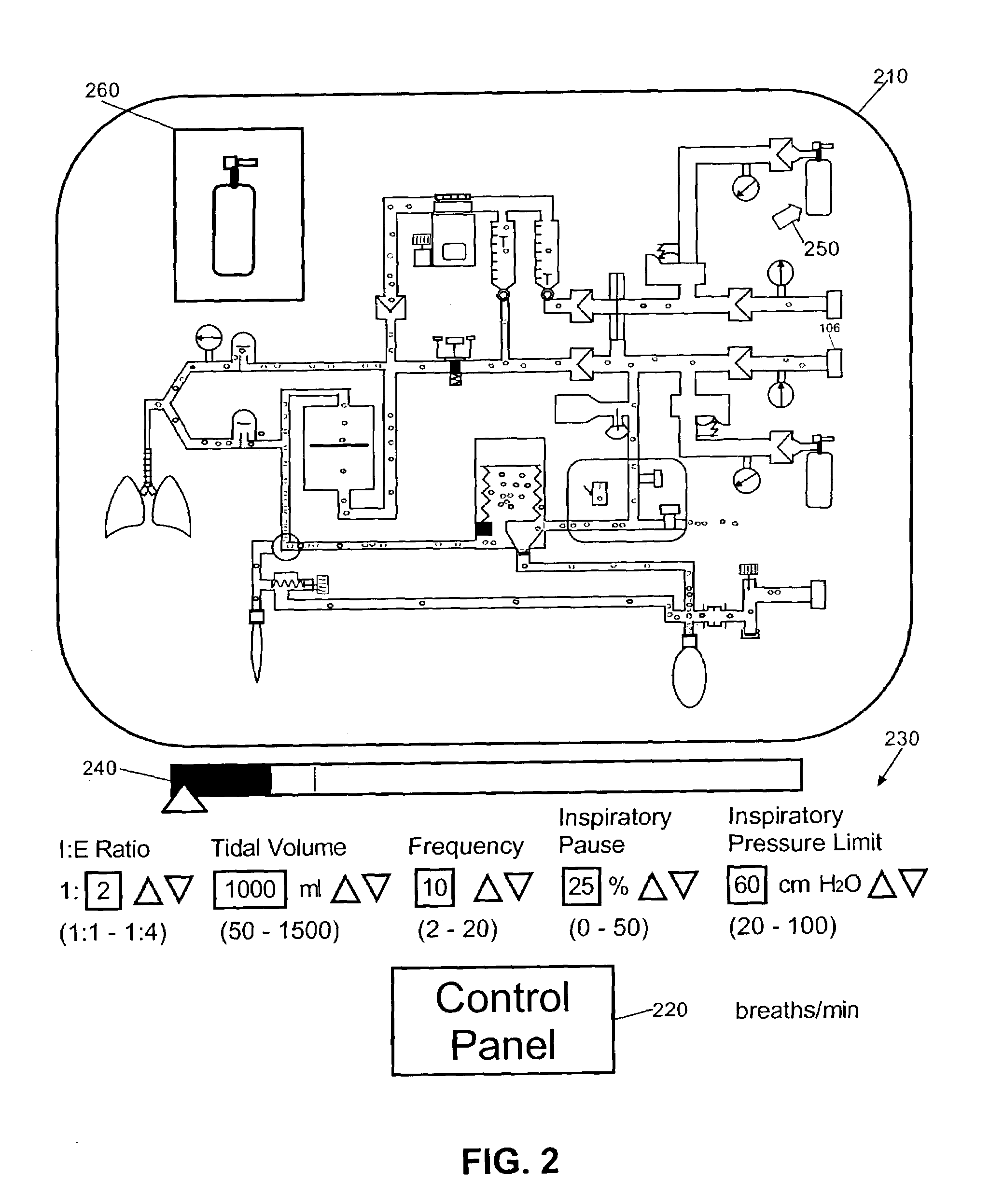Interactive simulation of a pneumatic system
a pneumatic system and simulation technology, applied in the field of computerized simulation systems, can solve the problems of limited use of diagnostic instruments, and limited use of treatment tools
- Summary
- Abstract
- Description
- Claims
- Application Information
AI Technical Summary
Benefits of technology
Problems solved by technology
Method used
Image
Examples
Embodiment Construction
[0029]The present invention is a pneumatic simulation system, method and apparatus. In accordance with the present invention, a conceptual view of a pneumatic system can be rendered in a graphical user interface. The pneumatic system can include, as an example, an, anesthesia machine, though the invention is not so limited and other systems can suffice, for instance an ICU ventilator. In any event, elements of the conceptual view of the pneumatic system can be activated, deactivated, or otherwise manipulated through the user interface. Resulting gas flows within the pneumatic system can be simulated graphically in the conceptual view.
[0030]More particularly, iconic representations of the gases in the pneumatic system can be animated through the concurrent presentation of individual gas molecule images within conduit sections of the pneumatic system. Each gas molecule image can be animated by way of a corresponding animation script. Each animation script can determine a direction and...
PUM
 Login to View More
Login to View More Abstract
Description
Claims
Application Information
 Login to View More
Login to View More - R&D
- Intellectual Property
- Life Sciences
- Materials
- Tech Scout
- Unparalleled Data Quality
- Higher Quality Content
- 60% Fewer Hallucinations
Browse by: Latest US Patents, China's latest patents, Technical Efficacy Thesaurus, Application Domain, Technology Topic, Popular Technical Reports.
© 2025 PatSnap. All rights reserved.Legal|Privacy policy|Modern Slavery Act Transparency Statement|Sitemap|About US| Contact US: help@patsnap.com



